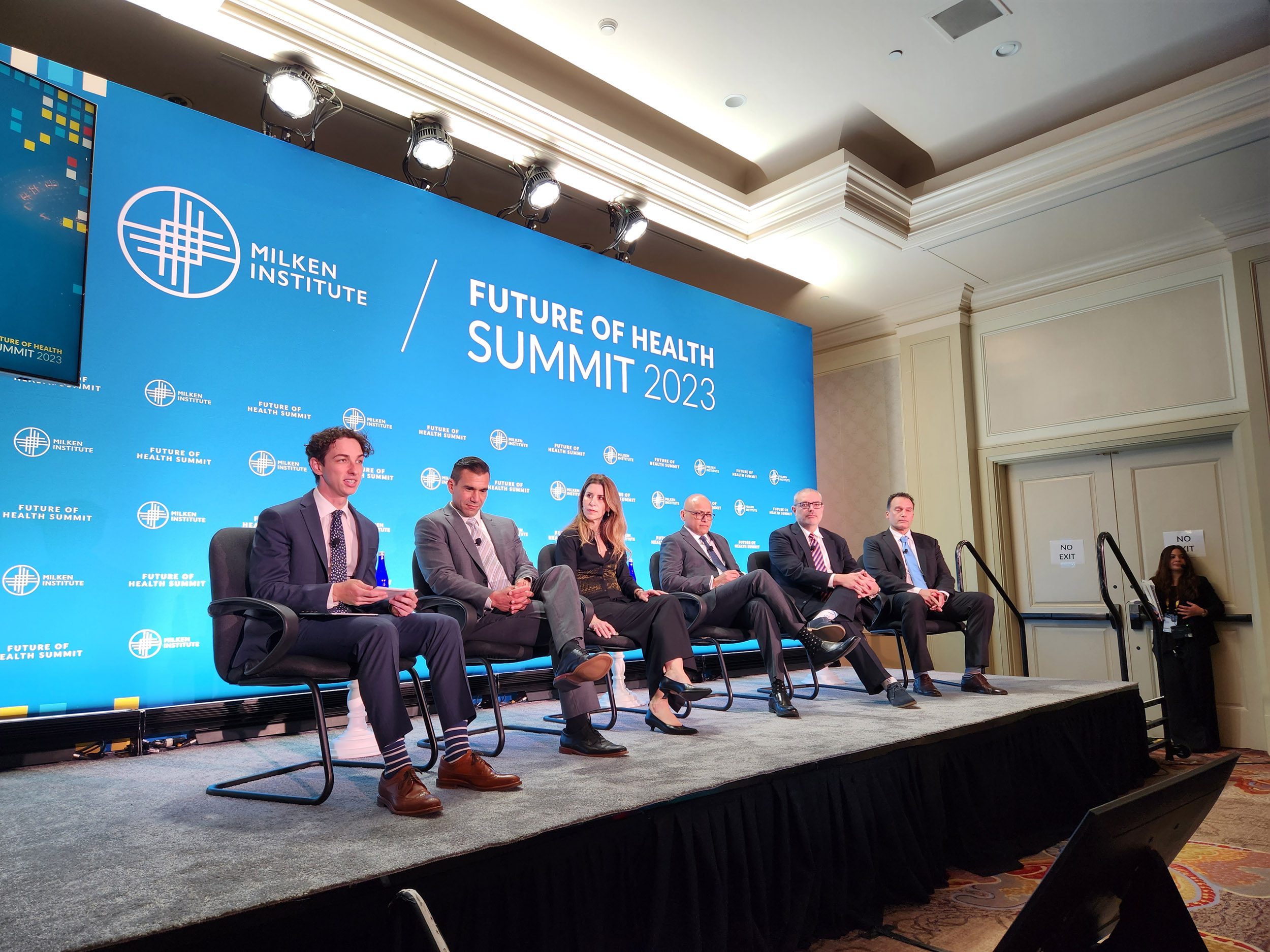Closing the Gap: Reflections on the 2023 Milken Institute Future of Health Summit
Introduction

The Trinity team recently attended the Milken Institute’s 2023 Future of Health Summit in Washington, DC. Its theme was “Closing the Gap” in healthcare – as chronic disease becomes more prevalent worldwide and the average life expectancy in the US declines to its lowest level since the early 1990’s, what can be done? The sessions explored how industry leaders, government officials, nonprofits, and patients can work together to reverse the declining and diverging metrics we see in healthcare outcomes today. Although not everyone is aligned on exactly “what success looks like” or the roadmap to get there, speakers and attendees agreed that adjustments to our current healthcare system can be part of the solution, and that we need to balance access with enabling innovation to raise global living standards and improve outcomes for all.
Here are a few takeaways most relevant to the Life Sciences industry, and an overview of the role it can play in “Closing the Gap”:
Partnership is Key
Collaboration across sectors and public/private partnerships have the potential to unlock improved system efficiency and outcomes for all stakeholders. With the pharmaceutical industry being called upon to raise the clinical bar across difficult-to-treat and high-unmet need indications (e.g., in rare disease and oncology), the complexity of bringing treatments to patients is increasing. At the same time, we are in an uncertain capital environment, with investors reticent to take on risk. Public/private partnerships and support from government bodies to de-risk investments in necessary innovations can enable continued progress in this challenging environment. The incentivization of partnerships between pharmaceutical companies that may typically be competitors also offers promise. Chris Austin, CEO of Flagship Pioneering and Vesalius Therapeutics, noted that this type of collaboration allowing for multi-asset platform trials in rare disease and oncology may bring needed products to those who need them fast, at lower cost for all.
Emergency Preparedness & Systems Resilience
Summit speakers across industry and government agreed that two of the main threats to our progress in “Closing the Gap” would be the ability to prepare for emergencies (rather than reacting to them) and to build the necessary resilience into our health systems to withstand shocks from global unrest, climate change, and potential future epidemics. Susan Monarez, Deputy Director of ARPA-H (Advanced Research Projects Agency for Health), noted that antimicrobial resistance (AMR) and increasing infectious disease risk present a serious threat to human life, and may allow bad actors to exploit our current lack of treatments. The science to confront this threat can come from the pharmaceutical industry, if given the right incentives to develop these treatments and diagnostics. Other “slow” emergencies such as the growing global obesity endemic, the increasing lack of primary care access in the US, and climate change also present challenges to be overcome. The Life Sciences industry can work with government and other players to address these issues. Janet Woodcook, Principal Deputy Commissioner of the FDA, noted that climate change impact would be the greatest threat to human health of our time. She encouraged attendees to critically examine their environmental impact, and to not shy away from the conversation around sustainability when the industry can show leadership instead. “It’s the externalities that keep me up at night, a catastrophic climate trajectory,” she said.
Focusing Innovation on the Greatest Need
Ensuring that the science follows patient need is already at the forefront of the Life Sciences industry’s motivation, and the conference speakers suggested a few additional areas that warrant special attention moving forward, with the goal of “Closing the Gap” in healthcare in mind. First, Amy Abernethy, President of Product Development and CMO of Verily, emphasized the need to continue to build equity and diversity into the fabric of clinical trials. We “need to bring more voices to the table,” she said, and noted that while much progress has been made on this front, there is more to be done to ensure women and all ethnicities are appropriately reflected in trial populations. Focusing pharmaceuticals development on the most severe patients, and building a base of scientific understanding in under-researched diseases, is also at the core of the pharmaceutical industry’s mandate, according to Hubertus von Baumbach, Chairman and CEO of Boehringer Ingelheim. He noted that only by treating the sickest patients and preventing the progression of these diseases can we hope to raise health outcomes for all.
Conclusion
Although certain health metrics are declining both globally and domestically, the conference speakers and attendees discussed these challenges with a sense of optimism. We are living in a time of unprecedented scientific potential, and with the right mix of innovation and access, health outcomes and living standards can be improved for all people.
Author: Liz Hamilton